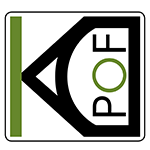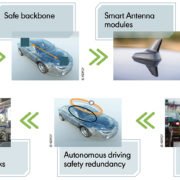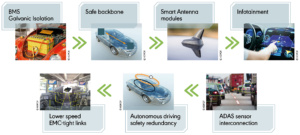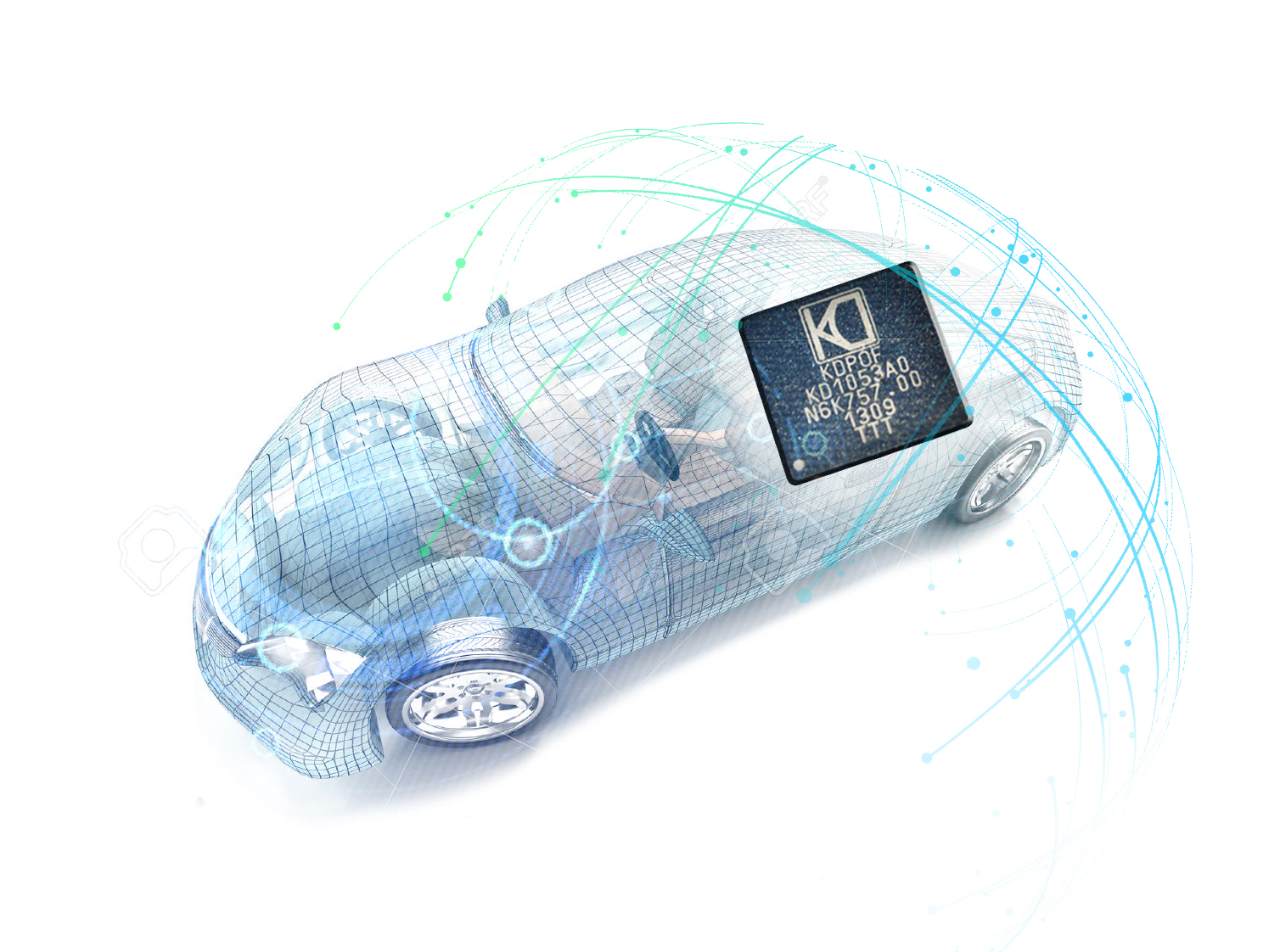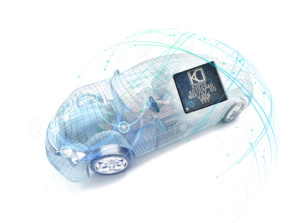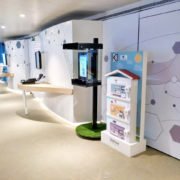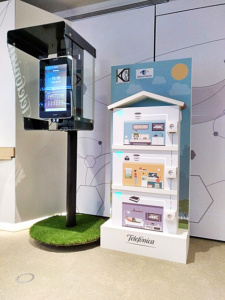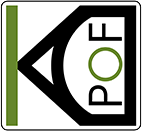For safety-related functions such as the data network backbone, autonomous driving requires redundant systems. The objective of this redundancy is to increase safety and avoid the autonomous car being locked if the backbone is disabled in some way. The second backbone may be optical as well, or even copper-based. Reliability analysis shows the highest reliability lies in having a technology redundancy like optical and copper. Consequently, more and more OEMs are now considering Plastic Optical Fiber (POF). KDPOF will introduce Optical Data Network Backbone for Autonomous Driving as a exhibitor at the 2018 IEEE-SA Ethernet & IP @ Automotive Technology Day, 9-10 October 2018 in London, UK. Read more
KDPOF will participate at AESIN (Automotive Electronics Innovation) Conference on October 2, 2018 at the National Motorcycle Museum near Solihull in the West Midlands, UK. In his presentation “EMC Lessons Learned on Gigabit Ethernet Implementation for ADAS & AV” at 16:30, Rubén Pérez de Aranda, CTO and Co-founder of KDPOF, will describe the lessons learnt of the iterative design process with the final goal to bring into the market a mass production automotive Gigabit Ethernet PHY integrated in an ECU meeting the most stringent EMC specifications. In the exhibition area, KDPOF will display demos of gigabit Ethernet network highlights in operation. Read more
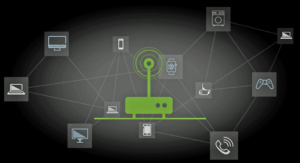
While ISPs and Telecom have increase access speeds, customer satisfaction rates drop if home networks cannot keep up with consumers interconnecting more and more devices.
ISPs and Telecom operators are offering higher and higher access speeds. At the same time, users at homes are interconnecting more and more devices and to the Internet. This translates in a crowding of the network that has to carry all this traffic between the devices and to/from the internet.
Despite the significant investments made in broadband networks in order to keep pace with the consumer’s increasing demands, the home network has been left behind. ISPs and Telecom operators offer higher and higher Internet access speeds, but they have ignored issues and challenges in deploying this in the end users homes. As a result, ISPs and Telecom operators are experiencing degrading customer satisfaction levels. The paradox is that the customer satisfaction reduces whilst the offered Internet speed increased. Read more
KDPOF has set up a Plastic Optical Fiber (POF) demo on behalf of Telefónica. “We are delighted that Telefónica has chosen KPDOF for the trial to test the benefits of POF for homes and small and home offices,” stated Carlos Pardo, CEO and Co-founder of KDPOF. “A Plastic Optical Fiber backbone inside the home in combination with WiFi access points is ideal for customer satisfaction, since this provides end users with maximum performance for both wireless and wired connectivity throughout the house.”
WiFi and POF for High Bandwidth
The demo consists of a mockup of a house and displays how the WiFi coverage is marginal when the WiFi access points (APs) are interconnected with the wireless backbone only. Once the APs are interconnected with POF the coverage improves significantly. It thus demonstrates how POF is an ideal complement to WiFi in the home network. Read more
